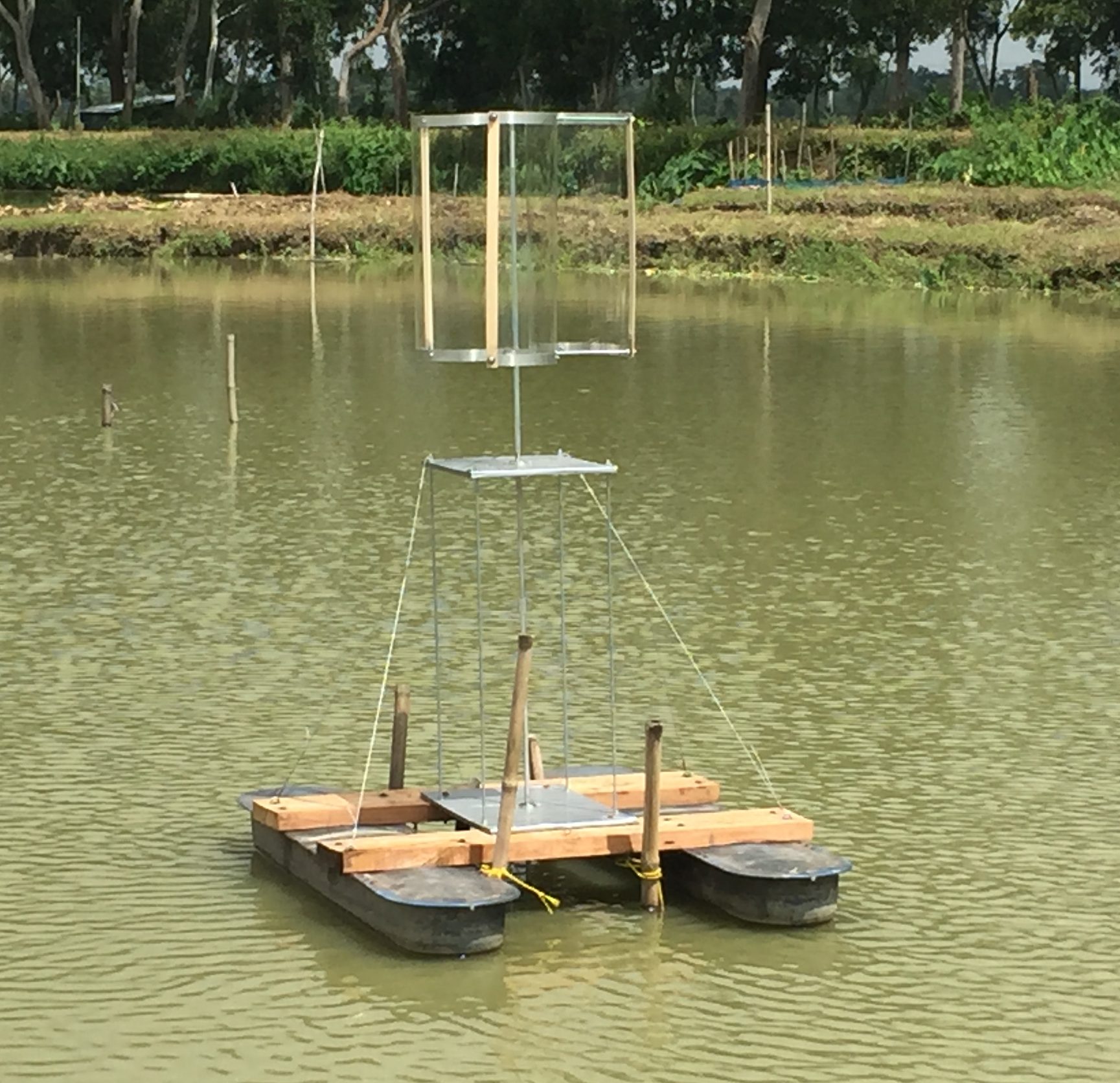Aquaculture is the fastest growing food-producing sector in the world, having grown at an average annual rate of 8 - 10% over the past 30 years. In addition, its importance as a source of dietary protein is expected to continue to rise as capture fisheries become increasingly unsustainable due to overfishing. In the Asia-Pacific region, where most of the growth in aquaculture has taken place, the majority of fish farmers either operate or work on small-scale subsistence ponds to fulfill their household’s food and income requirements. As such, aquaculture is recognized as an important component of rural development strategies aimed at improving food security for low-income farming households in the region. Nevertheless, due to the lack of aeration and other key aquaculture technologies, yields in those rural ponds have been low. Aeration systems are not typically employed due to lack of access to reliable electricity, as well as prohibitive capital, operating, and maintenance costs. CGEN has been supporting a range of research projects aimed at designing novel aeration systems or techniques to help improve the productivity of those small-scale ponds.
Wind-Powered Aeration for Resource-Constrained Aquaculture
Since 2014, the Water and Energy Research Lab (WERL), led by CGEN Director Amy Bilton, has been developing a floating, wind-powered aeration system which circulates the pond, resulting in destratification of the water column. In that process, water supersaturated with oxygen near the pond surface sinks to the bottom, thereby increasing the oxygen-content of the bottom layers of the pond; at the same time, anoxic water at the bottom of the pond rises to the surface whereupon it is oxygenated through diffusion from the air. The overall result is an increase in the pond’s average dissolved oxygen content and a reduction in the amount of oxygen that is lost from the supersaturated surface layer of the pond (i.e. a more efficient distribution of oxygen in the pond is accomplished); in addition, by mixing the oxygen-rich water from the top of the pond, the dissolved oxygen reservoir available at night is greatly increased. This improves fish survivability and growth, and allows farmers to increase their pond stocking densities.
The device has gone through an initial small-scale field trial in Bangladesh and showed an improvement in dissolved oxygen of 60%. It would be transformative for many smallholder farmers since it would be the only affordable aeration system on the market which requires no electrical input and has very low operating costs. In addition, it is an accessible technology for fish farmers as the system can be assembled by the farmers themselves using locally-sourced materials and can be maintained or upgraded with minimal training.
The device will be best-suited for areas with a minimal average wind speed of ~2 m/s, a threshold which excludes few regions in Southeast Asia. However, in cases where farmers absolutely need constant circulation (or circulation during emergencies), an optional battery-powered electric motor can be purchased (as part of the device) which can be fitted on the shaft of the device to induce mixing in the absence of wind. This motor can be manually switched on during quiescent periods by the farmers and its battery can be recharged through the grid.
Compared to existing aeration systems, such as mechanical aerators, diffusers and oxygen tablets, our innovation is affordable for smallholders, requires little maintenance, and does not incur ongoing costs, except among those who choose to purchase the auxiliary motor. In 2019, CGEN pitched the device concept to the ASME ISHOW competition for hardware-led social innovation and received the award of $10,000 to go toward field translation.
Feedback Aerator Control for Precision Aquaculture in the Global South
For slightly larger-scale fish farmers, WERL has been investigating the use of feedback control to maintain adequate dissolved oxygen and increase energy savings. To demonstrate the potential, a feasibility study was conducted in 2019 comparing the energy consumption of a diffused aeration system, with and without the use of a feedback control system. The effect of the diffused aeration system was simulated for a 100 m3 pond in Bangladesh for extensive and intensive fish farming. The interaction between the aerators and the pond was simulated and was used with a DO model to predict the oxygen dynamics of the pond. Results indicated that the addition of a feedback control system could result in energy cost savings of up to 78% compared to continuous operation for extensive and intensive fish farming respectively. Further work in smart instrumentation has the potential to decrease the energy requirements of aeration technologies and improve production for farmers in the developing world.






